Secrets to Training the Perfect Dog Q&A with Ian Stone
In the video above, Simpawtico’s first live video on YouTube, I did some dog training Q&A for behavior and training. International Open Academy, who at the time was hosting our online “Essentials” course, asked viewers for some training and behavior questions ahead of time. I answered them live on the broadcast.
I’ve outlined the biggest questions below, along with time stamps, so you can skip right to the parts that interest you.
In looking at the questions ahead of time, there were a lot of common threads that played off of things that I’ve talked about before in my work. I want to overview some of those concepts quickly so that as I reference those throughout this Q&A, we have some understanding of some of these concepts.
THREE CORE PRINCIPLES
FEEDBACK
Feedback is vitally important to your work. It has to be ongoing, binary, and representative.
In a nutshell, what I’m saying is that your feedback has to be:
- Ongoing like it’s a running commentary. It’s a stream of comments about how your dog is doing at the moment.
- You need feedback to be binary. Most people are good about telling their dogs what they don’t like, but only some people are great at saying how they’re doing. You want to communicate both sides of that coin. If it’s not looking right, OK, try again. But we have to be better about cutting the other way, too. We must tell them what we like when they do it better.
- And then it has to be representative. Dogs live absolutely in the moment. So, your feedback has to be analog to how they’re doing. If they were being bad two seconds ago and they’re being good now, you have to say so. That’s a skill that needs work, and that’s just how humans are wired. We complain about stuff we don’t like and take a lot of the good stuff for granted.
ENGAGEMENT
The other thing that I want to talk about is engagement. Engagement is one of the most underdeveloped parts of dog owners working with their dogs. I cultivate my engagement through games and exercises where I capture their voluntary attention, and I’m looking for eye contact and for them to reorient their body to me. When we capture that, we trigger an interactive reward-event.
REWARD-EVENTS
I’ve also mentioned before that reward-events aren’t just about what we give dogs. It should be an interactive experience between me and the dog; it varies in length and intensity. I want it to be something that the dog looks forward to the method rather than just thinking about the thing I give the dog.
There are more modular parts:
- Movement
- Praise
- Petting
- Toys
- Life rewards
All sorts of things can be stacked and layered in a reward-event. If we capture eye contact and re-engagement with us, which triggers a reward-event, that’s the on-switch. That’s the dog going, “I made that happen; that is amazing!”
So those principles—feedback, engagement, and reward-events—are essential. Then, it’s just consistent application over time.
People search for advice online, find trainers like me and my colleagues, and try the recommended solution once. If it doesn’t work, they feel lost. But the best thing to do is to keep trying. It’s not one-and-done. You’re melting an iceberg with Dixie Cups, and you gotta keep pouring.
So let’s get to some of your mailed-in questions. I’ve collated some of the questions because many folks asked the same or similar questions.
PROTECTED PUPPY SOCIALIZATION
Since this Q&A ran right in the middle of 2020’s coronavirus lockdown, the vast majority of people asked about how to socialize puppies during the pandemic. This section starts at 8:21, and I have a lot to say on this!
The ideal guideline is a hundred people and one hundred novel situations in a hundred days. That’s a pretty tall order (and some would say, unrealistic). We can’t do that during social distancing; most stores and training centers are closed. We can’t commiserate with groups of people. I’m completely shut down besides this virtual stuff. I’m not doing any of my group classes or my private sessions, so it’s tough. But a few things it’s possible.
DEVELOPMENTAL STAGES
Consider: studies conducted on puppy development 30-40 years ago by Scott and Fuller revealed that puppies undergo distinct developmental phases, much like children. These findings were groundbreaking back then and remain essential for any good dog owner to understand today.
In certain studies, dogs were exposed only to the upper body of a man from behind a door, yet showed greater confidence and resilience than puppies who had never interacted with humans before. We discovered that even minimal exposure to novel situations is hands down better than isolation. Even just minimal contact is on a totally different planet than isolation.
During Covid 19, we can still do protected socialization. Usually, we recommend some direct socialization and contact as long as the puppy’s willing. But we currently work with protected socialization, where we do these things at a distance. Dogs rely heavily on their sense of smell to make sense of the world around them. That’s why we appeal to their sense of sight, hearing, and, most importantly, smell. By doing so, we can better understand their world and make our communication more effective.
PRACTICAL EXAMPLES
Here’s an example of what I mean. Just down the road from us, there’s a Roadhouse Grill. Unfortunately, they’ve suspended table service for now, but their curbside pickups are constantly booming. Every time I drive by, the parking lot is jam-packed. If I had a puppy, I’d take advantage of the busyness and order food. We could park in the lot with the windows down, allowing the puppy to soak up the environment’s sounds, smells, and sights. As long as the pup isn’t scared or uncomfortable, we’d have a great time socializing and grabbing a bite to eat together. After an hour or so, we’d head out, having had a wonderful experience.
If you have some construction down the street, that’s a great opportunity, too. Go out in your front yard and watch it from a hundred yards away. Then, talk to your dog:
- “Sweetheart, that’s a jackhammer.” (Treat, treat, treat)
- “See that guy with the hard hat?” (Treat, treat, treat)
- “See that lady with that slow sign?” (Treat, treat, treat)
And more like this, and have a pleasant experience. You want your dog to think, “That was kind of spooky, but the buffet was fantastic!”
That’s good protected socialization. There’s a lot you can do depending on your area and how strict your social distancing guidelines are. There will always be beautiful opportunities to do some social distancing and some socialization at the same time.
Learn more about protected socialization from Puppy Culture, run by the experienced Jane Lundquist (formerly Jane Killian). She has extensive expertise in working with puppies and has written some informative books. The success of her website makes her a go-to person for advice. I highly recommend you visit her website!
Jane put out a very well-written and detailed article about socialization during the coronavirus pandemic. Honestly, it was so complete that I felt like anything I would do to address it would be a parody of what she had already done. So, I’ve been sending all my friends, students, and clients to her article. I’ve linked to that in the youtube description so you can dive deeper.
CRATES & CRATE TRAINING
We got a lot of questions about crates.
If your dog is hesitant or distressed about entering their crate, it’s crucial to help them see it as a safe and protected place. It would be best to convince them their crate is the go-to spot for rest and rejuvenation. It’s a place for them to be while you cannot supervise them, and they need to feel comfortable and stable inside that crate. We never use it for any punishment.
We rarely even use it for a time-out. Usually, any kind of time-out activity is brief, just to help them downshift. You don’t need to do that in their crate; any neutral, quiet space (even just hanging on to them) works. Moreover, it should only take about 60 to 90 seconds to bring it down a notch.
You can see my full answer in the video at 16:40, but I have a longer video/article discussing many of the ins and outs of crate training HERE.
CRATE GAMES
If your dog is reluctant about their crate, you’ll have to go back to the beginning and play some crate games. There are a couple of crate games I’ve published before, the Bait + Restrain game and The Bait Locker. I love fun and dynamic training with a lot of movement.
IS IT GOOD TO HAVE MULTIPLE CRATES?
A couple of questions asked whether it’s good for owners to have two crates. Though it’s not absolutely necessary, it depends on your management plan and your needs for having a crate in the first place. You might not even need a crate, but the two-crate thinking is that one crate is an inclusion crate, and one crate is a confinement crate.
Please take a look at my answer starting at 19:01.
BARKING
Barking is something that a lot of people asked about. It’s important to note that dogs bark for different reasons.
- Recreational barking is when the dog is just bored or looking for stimulation—they’re barking to self-soothe.
- Excitement barking is when they’re jazzed up that something exciting is happening in the environment.
- Demand barking is where the dog tries to communicate their wants or needs.
- Alarm barking is when they’re trying to communicate to you that something’s up they don’t understand or there is something they feel that you should be aware of.
Breed plays into this a little bit, too. Some breeds are more or less vocal than others. But don’t fall into the trap of making breed excuses. Every dog can and probably will bark, and every owner can and should address it.
My extended response to this is in the video at 22:40. I go into several strategies for each of the varieties of barking.
Since then, I’ve also written an extensive eBook about barking called “Barking Decoded.” Please give it a look!
LOOSE LEASH WALKING TRAINING
Loose leash walking—loose heeling—is another big subject that we got a ton of questions on.
This section starts at 37:34 and goes for quite some time with an abridged version of the entire walking training outline as we taught it back then. This is what is in the online walking course.
FEAR & AVOIDANCE
This is a subject near and dear to my heart, being how behavioral work dealing with fear and anxiety is the stuff we work with the most at Simpawtico.
The discussion starts at 46:14.
Some of the high points to look for include:
- You are looking to alter and/or establish good CERs (conditioned emotional responses)
- Segment the practice by breaking it down into small pieces. Use this analogy: if you go from quarts to cups and that doesn’t work, go to tablespoons. If that doesn’t work, go to teaspoons. Take it slow.
- Counterconditioning takes time. In the meantime, put management procedures in place so your dog’s exposure to the things that frighten them is as minimal as possible.
Understandably, addressing fear is not the most appropriate topic for a YouTube live session. However, if you still have queries, please get in touch with me. We can schedule a virtual consultation to explore the nuances of this matter in more depth if required.
“WHAT KINDS OF TREATS DO YOU RECOMMEND?”
We get asked this question a lot. This section in the video starts at 49:21, but the short answer is to use anything that your dog likes and that you can handle well.
We like small smelly things, about a quarter to a half inch, about the size of my pinky nail. We want palatable and small treats so we can handle them efficiently with our trapping system. I’m not fond of the big crunchy stuff because it takes too long to eat during training.
The specific training rewards I mention in the video are:
- Pet Botanics Training Rewards
- We also use the Stewart Pro-Treats freeze-dried liver as a jackpot or super-lure
- Note: those links are affiliate links. These won’t cost you anything extra, but the commissions we may earn through them help offset the cost of stocking up for classes!
I talk about these (and more) in our free annual buyer’s guide.
CONFIDENCE AROUND NEW PEOPLE
Many people struggle with those kinds of things, so I give a multi-prong answer in the video. I hit it rapid-fire like a machine gun (so buckle your seatbelt at section 52:25).
- Make sure that your dog is mentally, physically, and emotionally satisfied.
- Short-term management tools. Don’t allow behaviors you don’t like to occur (e.g., maybe your dog shouldn’t greet people at the front door). Also, you don’t want to keep exciting their nervous system like that since it will make treatment and training harder.
- Use good ongoing, binary, and representative feedback. Keep up on that differential reinforcement.
- Work on your engagement!
- Establish a reinforcement history. Make sure that doing the right thing is an opportunity for a substantial reward, and then practice those things in low-stimulation environments.
- Work in setups with people who can follow directions.
- Get a “dominance” mindset entirely out of your brain!
ZOOMIES
People also frequently ask about zoomies. People wonder if they should intervene or just let the dog wear themselves out.
Even for older dogs, zoomies are just a frenetic release of energy and are perfectly natural. As long as they’re not being obnoxious or just dangerous to themselves or anybody else, it’s OK.
Hear more about Zoomies at 57:35.
TRANSITIONING TO TOY TRAINING
Someone with a high-drive Border Collie asked about using toys in training and moving away from too many treats. This is a dynamite question because that’s precisely what her long-time plan should be: move away from treats and use toys as an obedience reward.
In my response to her, at 58:44, I talk about how to supercharge tug and fetch and start using them instead of food.
DOG EATING POOP
The technical term for poop eating is “Coprophagia.” It’s a gross dilemma, and I go through some of the considerations at 1:04:10.
We also have a free PDF on Coprophagia; you can download it here!
BAD COP, GOOD COP
Sometimes you get a situation where a dog listens to one parent, not the other. This is common not only with dogs but children as well!
This is something I encounter with my training clients reasonably frequently. The keys are cultivating engagement (starting mainly with our Free-Engagement drill) and building social currency. I dissect this situation further and offer solutions at 1:07:05.
WHO IN THE FAMILY SHOULD DO THE TRAINING?
I get this question a lot too. Should the dog only train with one person? Or is it OK for more than one person to do it?
Every member of the family should be involved in the training. It’s not just one master, the family, and then your four-legged servant. Everybody in the family should participate in the training. Everybody in the family should build that engagement and buy-in. It’s an interactive experience for the entire family. It’s OK to delegate some tasks (e.g., one person is mainly responsible for dinner), but the whole family should work cooperatively.
See the entire answer at 1:12:40.
CONCLUSION WRAP UP
Although we did our best to answer as many questions as possible during the YouTube live, regrettably, some went unanswered. If you want to contact us, please email us or comment below the video. In addition, remember to tune in to my live Facebook show, Cyber Office Hours, every weekday at noon Eastern Time. I’m excited to hear from you and learn more about your experience with the topics we discussed.
In the meantime, keep learning, keep practicing, and we’ll see you in the next one!


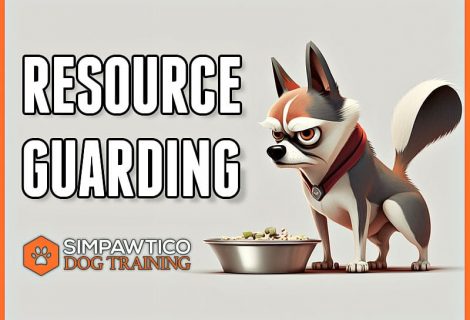
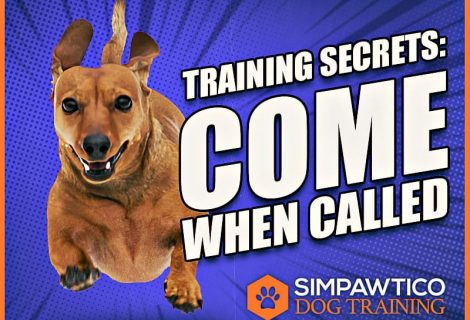
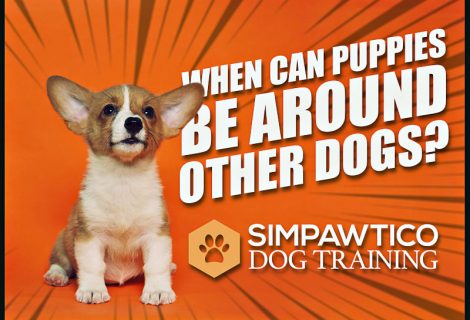

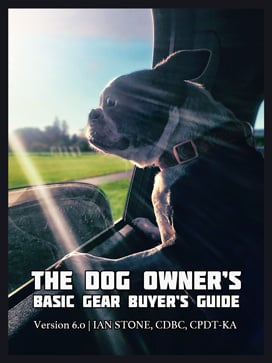


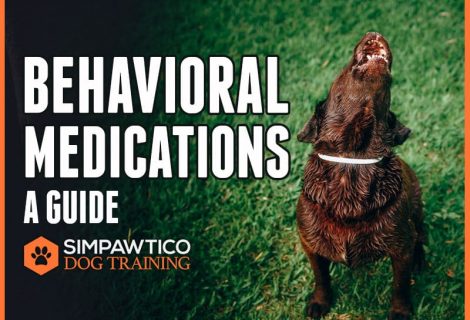
Thank you – I learned of you yesterday. The video on dominance and the PDF on resource guarding have been eye-opening. We desperately need help. I will call you. Short version: we are 62 (Bill) and 57 (Karen) empty-nesters. Last digs were Shelties, died very old 3 years & 5 months ago, so it has been a while to bring a dog home. We adopted Pepper (2-3 yr, 33 lb Intact male Blue Heeler) 5 weeks ago. Very sweet, licky, seems to want to please, friendly to all. But this was start of Covid quarantine, plus that first week, we found he is heartworm+, which our vet will treat and well pay for. First 4 weeks seemed fine, but I’m sure he is bored. Two walks a day, but no 2nd dog or play dates. We both took him on walks, we both feed him, but I talk to him more and pet him more. Bill usually sits near me in a recliner, and I sit on sofa, with Pepper beside me, so he has had a lot more pets from me. But on several occasions Pepper has slept at Bills feet at recliner.
Then Bill spent 2 days in the hospital (not Covid). I stayed home with Pepper 2 days. I drove with Pepper to hospital, drone us home. Bill got in recliner, Pepper laid at his feet again. But suddenly later that day, Pepper started growling at Bill, off and on. Seemed he was guarding me, but after seeing your PDF, I think he is resource guarding, and I’m his resource. It has been 36 hours since coming home from hospital. I thought yesterday was better, I took Pepper on morning walk, later, I went to the master bedroom (where he has never been; he’s used to both of us shutting that door), and Bill took him on the evening walk with no growls. Last evening went fine, Bill in recliner, me and Pepper on sofa as typical. No growl until suddenly when Bill picked up the wine bottle between us. ??? And this morning — unprovoked growling at Bill, right after Bill fed him (I was still in bed). He has walked across the room to growl at Bill several times. This morning, he barked at Bill – first bark ever in 5 weeks. Doesn’t even bark on walks when other dogs bark at him.
We need help to stop this NOW, or we will have to put Pepper back in the foster system.
Sorry so long; I will call you. -Karen Patterson